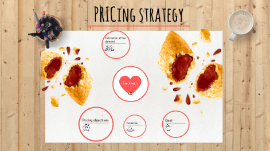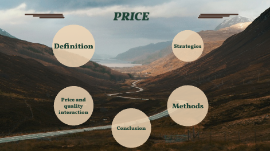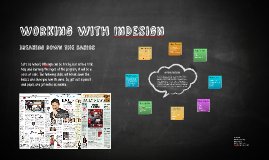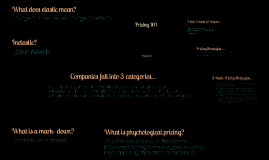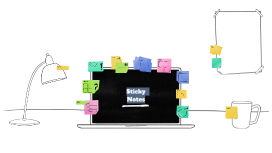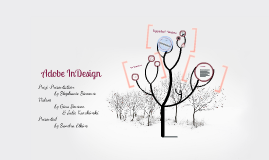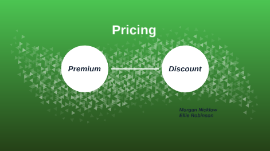Pricing Presentation
Transcript: by - Abhay, Justin and Shawn PRICE Definition Price - Definition Price refers to the amount of money a customer is prepared to offer in exchange for a product. A price set too high could mean lost sales unless superior benefits are offered. A price set too low may give customers the impression that the product is ‘cheap and nasty’. Somewhere between these extremes is a correct price for a product. For example, clothes with designer labels, such as Nike, Bardot, Roxy and Billabong, these labels can set higher prices for their garments than clothing sold under the Target or Kmart brand labels. Information on Pricing Information Methods Pricing Methods For pricing a product, the business must consider many factors like competition, regulations, level of economic activity and location. The Three main pricing methods are: - Cost-based - Market-based - Competition-based Pricing method provides ‘Basic price’ for each product. Basic price is adjusted depending on the marketing objectives and conditions within the workplace. It is a pricing method derived from the cost of producing or purchasing a product and then adding a markup. Markup is a predetermined percentage that a business adds to the cost of a product to determine its basic price. Cost + (Cost × Markup percentage) = Price Cost-based Pricing Cost-Based If a manager of a clothing store buys 100 t-shirts at $50 each and applies an 80% markup on cost, the price to the consumer will be $90 per item. This same percentage mark-up might be applied to all products in the store. Example of Cost-based Pricing Example 1. Difficulty in accurately determining an appropriate markup percentage. 2. The product is priced after production and associated costs are incurred without talking into account the other elements of the marketing mix or state of the market. Disadvantages of Cost-based Pricing Disadvantages It is a method of setting prices according to the interactions between the levels of supply and demand, whatever the market is prepared to pay. Supply is the quantity of a product businesses are willing to offer for sale at a particular price. Demand is the quantity of a product consumers are willing to purchase at a particular price. When demand for a product is greater than it’s supply, there will be a shortage in the market. Conversely, when the supply of a product is greater than its demand, a surplus will exist in the market. Market-based Pricing Market-Based Shortage example, if 100 prospective buyers attend an art auction but there is only one particular type of painting offered for sale, the price will rise. As the price rises, buyers will progressively drop out of bidding until the final buyer is successful. Surplus example, bananas are cheaper in summer months. Examples of Market-based Pricing Exmaple However, this method can be difficult to apply because the levels of supply and demand will constantly change. Disadvantages of Market-based Pricing Disadvantages It is where the price covers costs (costs of raw materials and the cost of operating the business) and is comparable to the competitor’s price. Most products are available from more than one business. Businesses, therefore, need to consider the competition when making their pricing decisions as consumers compare prices during a major purchase. Once a business has established a base price, it can then decide to choose a price either: below to that of competitor, equal to that of competitor or above to that of competitor. Competition-based Pricing Competition-Based Competition-based pricing is often used when there is a high degree of competition from businesses producing similar products. Strategies Pricing Strategies Once the basic price has been set using the pricing method(s), the business will fine tune this price in line with its pricing strategy. It’s common for a business to use multiple pricing strategies at once even for the same product. The use of the strategy depends on: - Its marketing objectives - The life cycle of the product - The market for the product - The degree of product differentiation - The level of economic activity Example: Internet and e-commerce expansion weakened some businesses control on the prices. For example the widespread use of bundle pricing common with telecommunications businesses, as evidenced by the advertisements from mobile phone companies, internet providers and cable television operators offering all kinds of packages. Information on Pricing strategies Information The pricing strategy will have to be modified depending on changes within the external business environment, especially technology influences. It occurs when a business charges the highest possible price for the product during the introduction stage of its life cycle. Early purchasers (adopters) of innovative electronic equipment fall into this category. The objective is to recover the costs of research and development as quickly as possible, before competition enters the market. For example, Price







